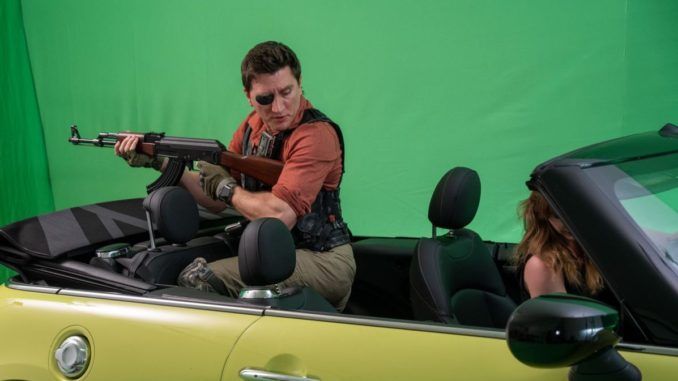
Best known as director of post-apocalyptic dance video-game movie franchise, The FP, – yes, that is a thing – Jason Trost has been making his own damn movies for over twenty years now. But he’s certainly not limited just to post-apocalyptic dance vid… Oh, you get the idea. His films have covered topics as disparate as superheroes, reality television, and in his most recent film, The Waves of Madness, the side-scrolling resurrection of an elder god. Which, naturally, was made almost entirely in an empty upstairs apartment. Now working out of Australia, I talked to Jason about the difference between there and Hollywood, the importance of making art that’s personal, and – of course – video-games!
Between The FP and Waves of Madness, you’re clearly a big video-game fan. What are your three favorite games of all time, and why?
Hard question, but off the top of my head: The OG Resident Evil for the atmosphere and vibe (I probably play that game once a year), Final Fantasy VII for pure world-building, scale, the music… and helping me realize at a young age what we are doing to our planet, and Castlevania: Symphony of the Night because it just hits that perfect side-scrolling sweet spot. I don’t know if anything flipped the script for me in gaming quite like… there’s another castle… and it’s upside down?!
Are you surprised The FP ended up going from a short film into a whole franchise, with four feature films?
Absolutely. When we shot the original shorts, it was just me and my friends messing around in the mountains. The fact that it spiraled into a cult series with its own following still kind of blows my mind. But I think when you build your own universe, it’s hard to ever truly walk away from it. The FP just keeps pulling me back in.
Waves of Madness combines Lovecraftian horror and side-scrolling action. Which element came first, and how did the idea to combine them come about?
The side-scrolling idea came first. I always wanted to make a movie that felt like watching a PS1-era survival horror game, where you don’t play, you just experience. From there, Lovecraftian horror felt like the perfect match. Both are about mood, dread, and the unknown creeping in from the edges. I was also reading The Call of Cthulhu when I was coming up with the idea which lead me to… Where is Cthulhu actually imprisoned? I punched in the coordinates in the book, which lead me to Point Nemo, the spaceship graveyard and then the movie evolved from there.
It sounds like there was quite a long pre-production process. How much was that by design?
A lot of it was by necessity. When you’re building every set yourself on a computer in a tiny studio apartment, there’s no “just go out and shoot.” I realized no one would know what the hell they were doing but me if they didn’t know what they were interacting with. So I spent months creating the backgrounds and environments, essentially building the world before I ever rolled camera. It was like designing a game level and then stepping into it. I then got to show all the sets to the actors and my cinematographer as we shot and could be like “here’s the game, now let’s play it.” So we treated the whole movie like a play, that scrolls, acting out long one shots. And I think that’s part of why people don’t know what to make of the acting in this movie at times. Because you’re really not used to seeing acting only from wide shots and how much “good acting” is dictated by closeups.
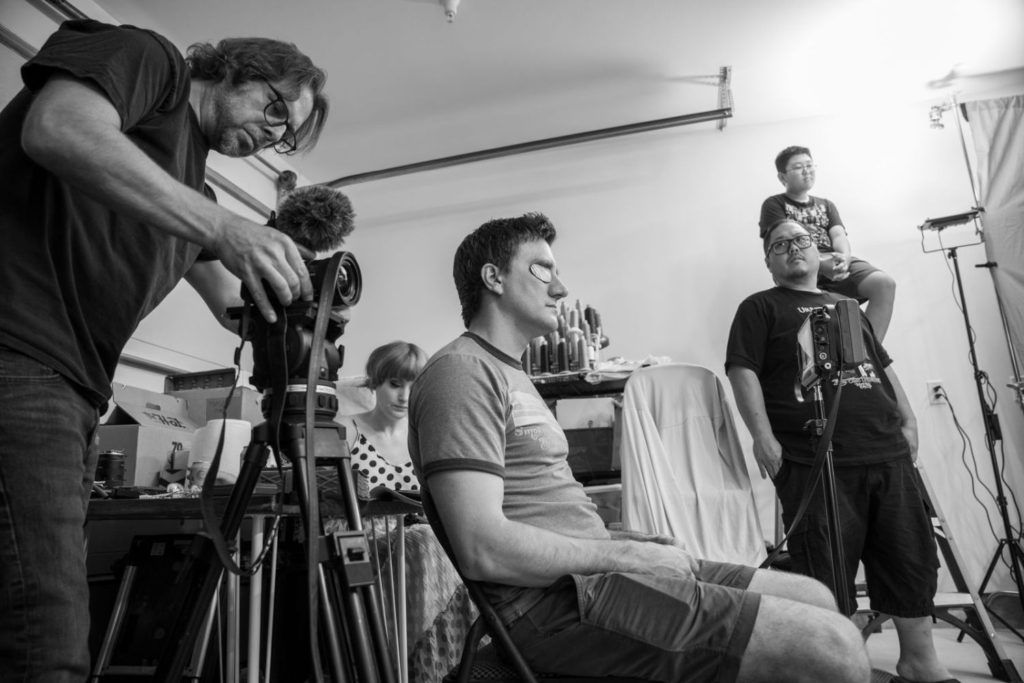 Was there anything in the film which had to be abandoned, due to the limits of time and resources?
Was there anything in the film which had to be abandoned, due to the limits of time and resources?
Definitely. The original concept was basically a full-on Metal Slug homage, non-stop action with four characters running and gunning through this insane side-scrolling world. But pretty quickly, I realized how ambitious that was for a first attempt at this format, especially with our microbudget. So I scaled it back and leaned into the pacing and mood of classic horror movies instead. That shift actually worked in the film’s favor, the slower burn gave it more atmosphere, and the limitations helped shape the final tone. I find that constraints usually end up helping the final product, even if it doesn’t feel like it at the time.
What was the biggest lesson you learned over the whole production?
To believe in myself. This kind of movie hadn’t really been done before, so I had to stop thinking about how someone else would make it or what other people might want to see, and start asking myself, How would I make it? What do I want to see? That shift was everything.
Once I embraced that, it became about trusting my instincts and just starting. If you have an idea and even a rough way to execute it, don’t wait. The longer you wait for the perfect time or budget or crew, the more likely it never happens. I had to learn to problem-solve my way through, even when at times I had no clue what I was doing.
And when it came to distribution, the other big realization was: no one cares about your movie as much as you do. You have to be your own biggest advocate. I guess after 20+ years of making indie films, this was the project that finally made me feel confident in what I’m doing, and that’s a lesson I didn’t see coming.
Was there ever a point at which you thought, “I’ve made a terrible mistake trying to do this”?
I think we’ve lost track of what bold, personal filmmaking looks like.
But, that feeling definitel continues to creep in further into the process, especially when the early reviews or hot takes start rolling in and some people are tearing it apart. But then I remind myself: this movie isn’t for everyone. None of my movies are. And I’m okay with that, in fact, I prefer it that way.
Art shouldn’t be universally praised. When it is, it usually means it’s been watered down into safe, mass-market content. In today’s world, where 90% of people saying a movie is “okay” makes it a masterpiece on Rotten Tomatoes, I think we’ve lost track of what bold, personal filmmaking looks like.
I made The Waves of Madness for a very specific audience, people who love strange, lo-fi, atmospheric horror and retro gaming vibes. And if that’s not you, that’s totally fine. Because when you try to make something for everyone, you end up making something for no one. I’d rather have a passionate niche audience than a bored broad one any day.
What element of Waves are you proudest of?
The atmosphere. I think we really captured that weird, dreamlike tension of old-school survival horror and classic monster films. And the fact that we pulled it off with such a tiny team and budget makes it even more special. Also, just the fact that I made a side-scrolling film and it actually got released will never cease to amaze me.
How is making movies in Australia, compared to the United States?
I honestly love it. Life just feels easier here, and because of that, filmmaking is easier for me too. It’s quieter, more focused, and I’ve found the isolation, being on the other side of the world from most of the friends and family I grew up with, to be surprisingly helpful creatively. You’re not surrounded by the constant industry noise like in LA, where everyone’s trying to network, hustle, and second-guess if your project will help their reel or land them a meeting.
Here, the vibe is way more relaxed and collaborative. Everyone’s just genuinely keen to help make something cool. There’s less of that corporate pressure and more raw creativity, which I love. And visually, the landscapes and architecture are incredible, I pulled a lot from local locations and textures when building the plates for The Waves of Madness. It’s been a great place to get weird and build something unique. I wouldn’t trade it for anything.
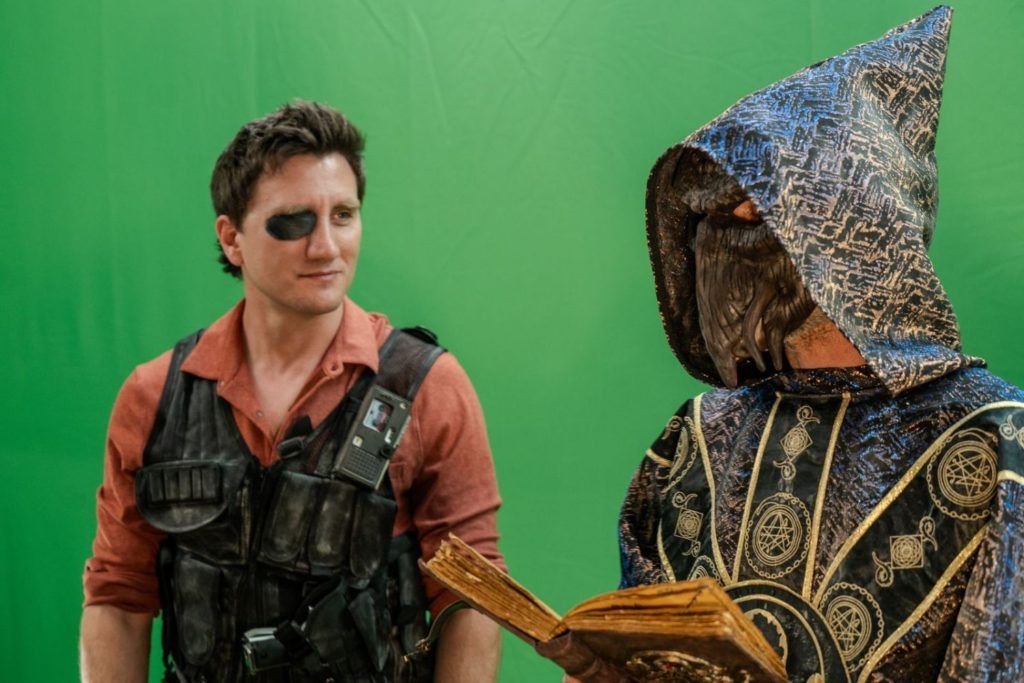
Tell us about your next project: AFAR: An Interactive Horror Film.
AFAR is something I’ve wanted to make for a long time, basically a full-on interactive movie in the style of those old FMV games from the ’90s. I’ve always loved the idea of a game that is a movie, and one that doesn’t require any special hardware to play. If you’ve got a Blu-ray player, DVD player, or even just YouTube, you can play this film. That accessibility was important to me.
It started off as a smaller side project, I wanted to try something different while doing all the press and interviews for The Waves of Madness, especially since I basically became the entire publicity team. But like all things I do, AFAR quickly spiraled into something way more ambitious and complicated. It’s probably one of the most experimental projects I’ve ever tackled, and I’m excited (and a little terrified) to see where it goes.
It’s a love letter to that PS1/PS2 survival horror vibe, think Silent Hill 2 meets Bandersnatch. You make choices at the end of each scene that steer the story, and it’s drenched in grimy VHS textures, eerie sound design, and surreal tension. I’m also trying to get my YouTube channel monetized so I can release it there as a fully interactive experience. It’s weird, creepy-ish, and kind of unclassifiable, which is exactly how I like it.
Your brother Brandon is a well-regarded cinematographer, working on large movies – most recently the Naked Gun remake. Would you want to work on big productions, or are you happier with the full creative control that comes with smaller budgets?
I’d rather be making things than waiting for permission.
It takes years, sometimes decades, to get something moving, and for me, that’s just too much life to burn. I’d rather be making things than waiting for permission to maybe make something someday that I don’t even really like. That’s why I gravitate toward smaller budgets and full creative control. I get to build weird, personal worlds on my own terms. Sure, it’s scrappy, but it’s mine and I get to work with whoever I want.
And now, a dive into the rabbit hole of the Trost filmography. All hail Tubi, as the source for them except the most recent one.

The FP (2011)
Rating: B-
Dir: Brandon Trost + Jason Trost
Star: Jason Trost, Art Hsu, Caitlyn Folley, Lee Valmassy
I’ll be honest, I had come across this in the past and scrolled right past it. I mean, wouldn’t you with this synopsis? “In a post apocalyptic future, two rival gangs fight for control of Frazier Park by playing Beat Beat Revelation, a deadly version of Dance, Dance, Revolution™” Nah, I’m good, thanks. The description is entirely accurate, and the film approaches its topic with an absolutely earnest attitude. Yet that deadpan seriousness is precisely why it’s frequently laugh out-loud funny. The proceedings are anchored by Trost as JTRO, the BBR ace, who quits the game and moves away, after his mentor BTRO dies in a match. But the power vacuum he leaves get rapidly filled.
In his new, wood-chopping life, he’s visited by best friend, KCDC (Hsu), who begs him to return. For the FP has been taken over by the evil L Dubba E (Valmassy), and gone to hell as a result. JTRO is convinced; complicating matters, on his return he falls for L’s girlfriend, Stacy (Folley). JTRO challenges L, but before he can face his nemesis, has to prove his worth against other opponents. Yeah, this is less a plot than a parade of clichés and tropes from every sports movie ever made, with Rocky the most obvious (and cheerfully admitted) influence. The joy is in the execution, not least dialogue which is perhaps the most incomprehensible youth-speak since A Clockwork Orange. I strongly recommend subtitles.
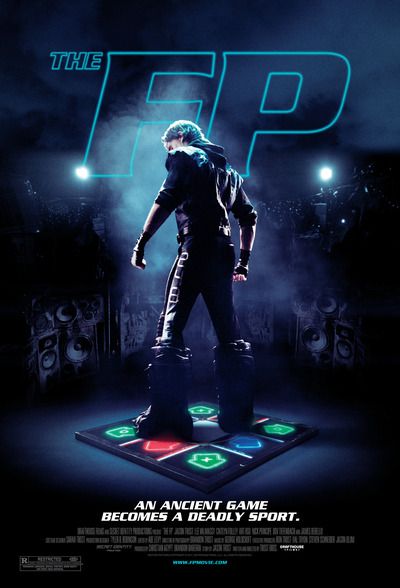 KCDC is a delight in this area, and reaches his peak with this emphatic explanation for why JTRO must come back.
KCDC is a delight in this area, and reaches his peak with this emphatic explanation for why JTRO must come back.
It’s end of days out there, JTRO. The darkness has come. Goddamn drunks goin’ straight edge right on the street. Resortin’ to meth and shit! And now with no drunks, there ain’t no bums. And with no bums, there ain’t no motherfuckers to feed the ducks at the park. What’s a fuckin’ town with no ducks, JTRO? It’s nothin’! It ain’t nothin’! How’s a nigga supposed to sort his shit out without no ducks?
I want that last, glorious sentence on a T-shirt. In contrast, JTRO is very much the stoic type. Imagine Derek Zoolander as an action hero, and you’re close.
To be honest, I was wanting more of the actual BBR. There’s only three scenes, and they’re a particular joy – probably more than the JTRO-Stacy relationship, which isn’t very interesting, even by the low standards of such things in sports movies. However, it’s still amusing, far in excess of its price tag. Does the concept deserve no fewer than three sequels? Well, I’m not entirely convinced of the need for these, and cannot see myself going down that rabbit-hole anytime soon. This almost feels like a SNL sketch extended to feature length, and by the end, the cracks are beginning to show. However, it crosses the finish-line intact, and is a demonstration that the best way to do a successful parody, is to play it entirely straight.

All Superheroes Must Die (2011)
Rating: C-
Dir: Jason Trost
Star: Jason Trost, Sophie Merkley, James Remar, Lucas Till
Saw for superheroes. Ok, that’s a facile simplification of the plot here. But it’s not inaccurate. This takes place in an alternate world where something from outer space crashed to earth, and gave certain people abilities. Four of them – Charge (Prost), Shadow (Merkley), Cutthroat (Till) and The Wall (Lee Valmassy) wake to find themselves robbed of their powers, and facing a series of violent trials. Failure to comply or complete the assigned tasks will lead to the deaths of innocent civilians. These are the demands of supervillain Rickshaw (Remar), who is fed up of the quartet always preventing his evil plans from being successful. He’s now out for revenge, of the manipulative and sadistic kind.
I think my main problem with this, is the sensation I was watching the second film in a franchise, rather than the first. This feels very much in need of a prologue before we get to the kidnapping and trials. Without showing Charge and his pals using their superpowers, we just kinda have to take them on trust – and as we find out later, that’s not necessarily a good idea. Admittedly, given the budget of only twenty thousand dollars, I understand why any demonstration of abilities beyond a firm handshake were not included. However, this also leaves us in the dark with regard to Rickshaw, who presumably has talents of his own. Yet we have to take his status as a pre-existing villain on trust too.
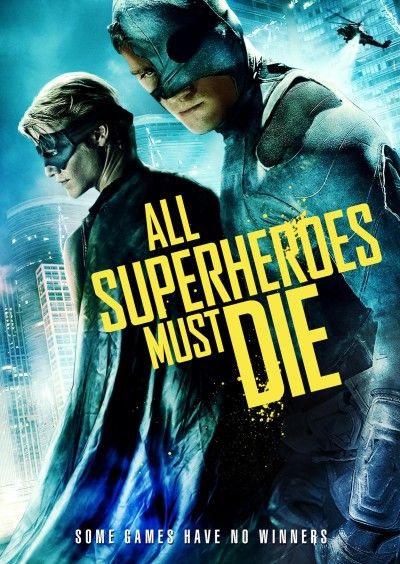 Well, until he starts blowing people up, at least. Remar definitely seems to be having the most fun here, despite having almost no direct interaction with the rest of the cast – he appears, in a very Jigsaw-like fashion, only on TV screens. However, he sells his malicious intentions effectively, in a way reminiscent of a call-centre version of The Joker. On the other side, Trost is a square-jawed hero, whose closest cousin might be the Christian Bale version of Batman, with more moral grey. By the end, he’s doing things of which Bruce Wayne certainly would not approve, though none of his pals seem more than mildly disapproving of him. Mind you, their acting range may not stretch much past “mild disapproval”, sadly.
Well, until he starts blowing people up, at least. Remar definitely seems to be having the most fun here, despite having almost no direct interaction with the rest of the cast – he appears, in a very Jigsaw-like fashion, only on TV screens. However, he sells his malicious intentions effectively, in a way reminiscent of a call-centre version of The Joker. On the other side, Trost is a square-jawed hero, whose closest cousin might be the Christian Bale version of Batman, with more moral grey. By the end, he’s doing things of which Bruce Wayne certainly would not approve, though none of his pals seem more than mildly disapproving of him. Mind you, their acting range may not stretch much past “mild disapproval”, sadly.
Given the circumstances, there’s a peculiar lack of urgency, considering the entire plot is basically driven by a series of ticking clocks. There’s an early scene where the four superheroes are given a couple of minutes to acquire weapons from a hardware store. However, they seem to be shopping with as much enthusiasm as my father, who turns ninety in October. If the heroes are acting like they can’t be bothered, it makes it harder for the audience to give a damn. The concept here is good, doing the “far from perfect superhero” thing well before Amazon made The Boys [though the comics on which that was based, first came out in 2006]. But unlike The FP, there isn’t enough energy here to cover up the cracks.
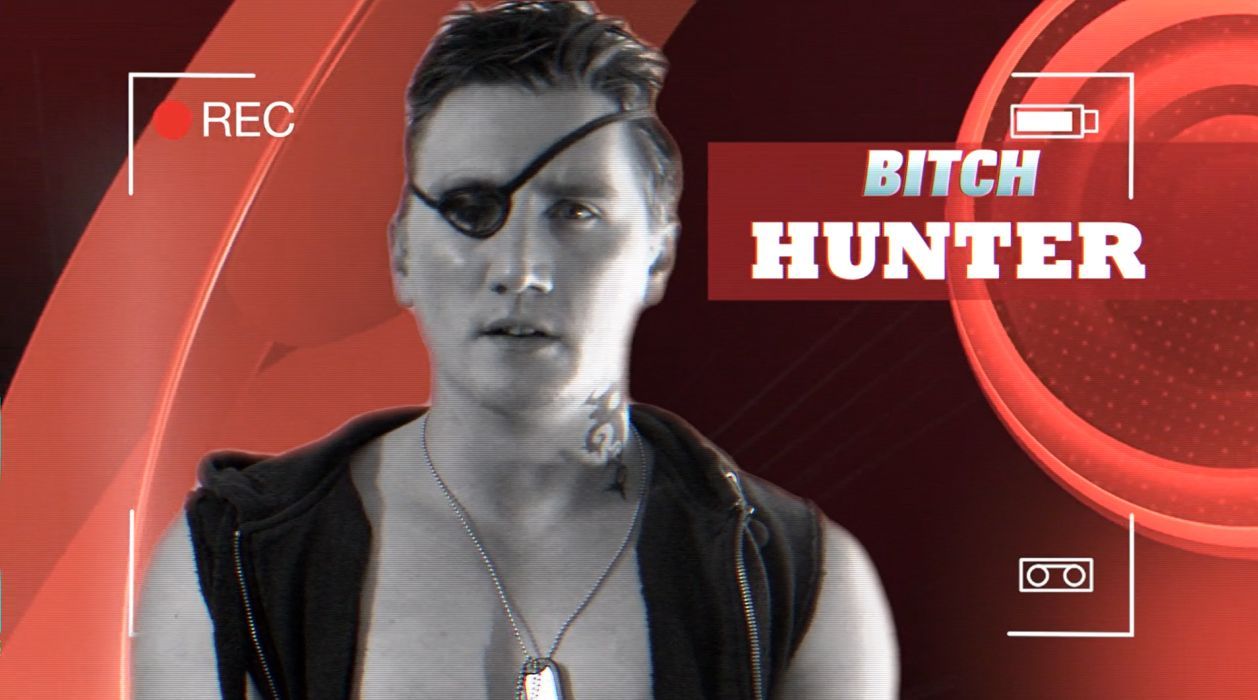
Wet and Reckless (2013)
Rating: C+
Dir: Jason Trost
Star: Jason Trost, Lucas Till, Scout Taylor-Compton, Sean Whalen
The film opens with a bold statement: “WARNING: The following film requires a 3 drink minimum to fully enjoy.” Hah. You’re not the boss of me. I watched it stone-cold sober on a Monday afternoon. Take that, Mr. Trost. However, I still had a decent time: I suspect in part because it seems he shares my deep disdain for reality television, in particular of the MTV flavor. I speak as someone whose wife and daughter were on an episode of Room Raiders. However, based on this, I suspect Trost has watched a great deal more of it. Possibly hate-watched, given the first half-hour here is a particularly vicious parody of the genre, and those who make it – both in front of, and behind, the camera.
The central characters here are two thoroughly obnoxious males: Lobo (Trost) and Toby Dollars (Till), stars of Pussy Police, which is exactly what it sounds like. They get exported over to Thailand, along with new cast member Sonya, a.k.a. Turbo (Scout-Compton). However, the trio are then abandoned by the production company, and left penniless in what seems to be a ruse to get the show re-cast. For if they’re not back on set in America by the time shooting starts, their contracts become null and void. But it’s okay, because Lobo has half a treasure map, passed down from his father. All they need do is find the other half, locate the treasure, and use it to buy their tickets home.
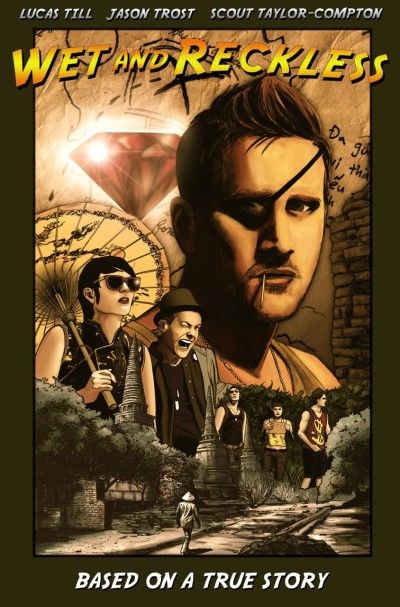 Early on, you’ll want to throw things through the TV, because Lobo and Dollars are utterly repellent. I mean, entirely deliberately, not that it makes it easier to watch. I’d call them whiny, egotistical Neanderthals, except that would be an insult to Neanderthals. However, once they’re abandoned, it becomes apparent much of that is a facade for the cameras, as fake as everything else in “reality television.” The change is a little abrupt, especially in how they relate to Sonya. Lobo goes from date-rape drugging her, to making her an honourary member of the Pussy Police rather too quickly. However, you do end up no longer hating Lobo and Dollars, especially when the truth comes out.
Early on, you’ll want to throw things through the TV, because Lobo and Dollars are utterly repellent. I mean, entirely deliberately, not that it makes it easier to watch. I’d call them whiny, egotistical Neanderthals, except that would be an insult to Neanderthals. However, once they’re abandoned, it becomes apparent much of that is a facade for the cameras, as fake as everything else in “reality television.” The change is a little abrupt, especially in how they relate to Sonya. Lobo goes from date-rape drugging her, to making her an honourary member of the Pussy Police rather too quickly. However, you do end up no longer hating Lobo and Dollars, especially when the truth comes out.
It’s largely shot hand-held for that “found footage” feel, and I suspect a fair amount of guerilla filming too. Witness the scene at a temple, where Lobo and Dollars bounce around the ruins looking for a fake brick, while Sonya tries and fails to distract other tourists by showing a bit of leg (“Correction: Got a pack of homosexual tourists coming your way”). It’s sometimes not very coherent: one second, Lobo gets shot with a tranq dart at Bangkok railway station, the next he’s sporting a blonde fright wig and is tied up in a Russian drug lab. Wait, what? So I suspect the alcoholic suggestion of the opening might help paper over such cracks. Crude in approach and attitude, it skewers the idiocy of the genre effectively. Might be a while before Trost is allowed back into Thailand though.
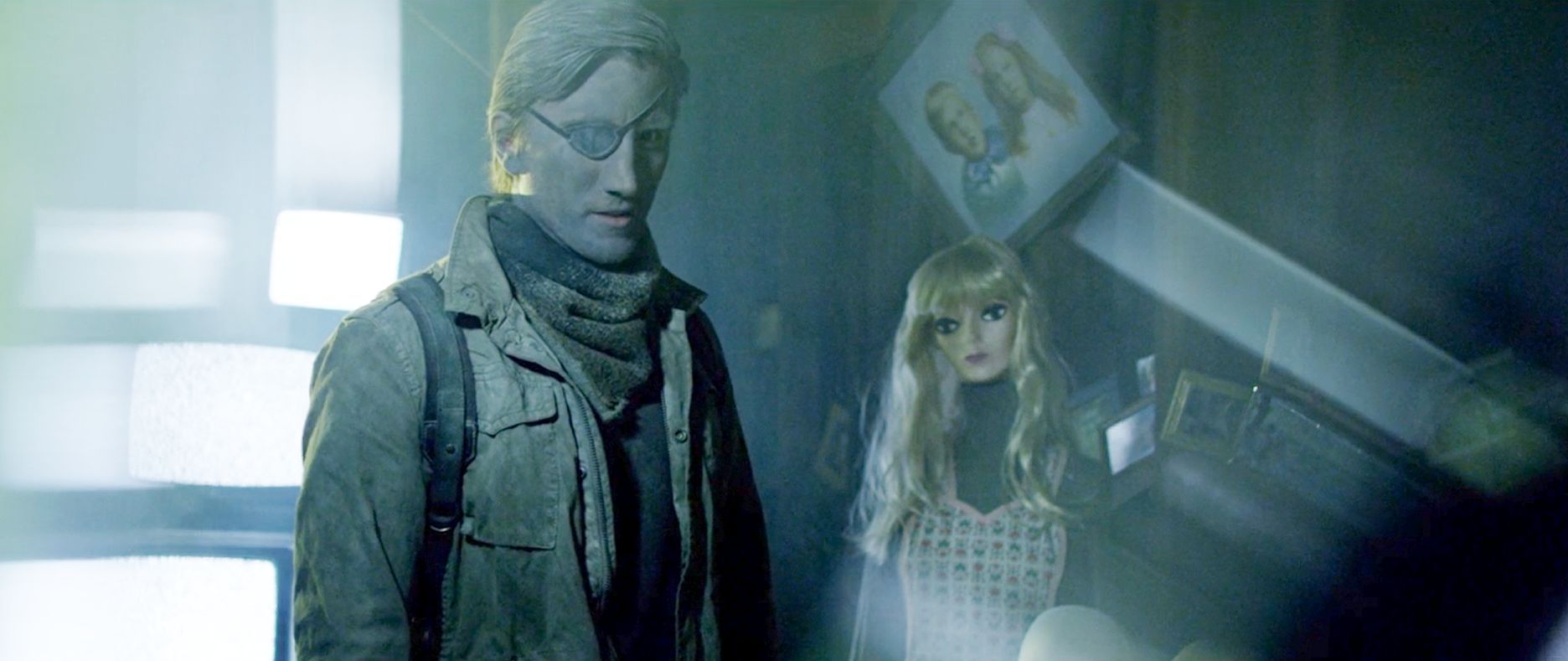
How to Save Us (2014)
Rating: C+
Dir: Jason Trost
Star: Jason Trost, Coy Jandreau, Tallay Wickham
This is certainly an odd one. The island of Tasmania, off the South coast of Australia, has been evacuated because… Well, weirdness. Sam Everett (Jandreau) has gone missing there, and his older brother Brian (Trost) journeys to Tasmania, to try and find him. He’s a somewhat reluctant saviour, largely there only at the behest of their sister, Molly (Wickham). On arrival, we discover the island is home to a portal, which has allowed the spirits of the departed to come through. That’s what led to the evacuation, because they’re… not happy. There are ways for the living to protect themselves against them: coating yourself in the ashes of the dead, for example. Graveyards offer a sanctuary. Electricity might be a weakness.
There’s a tiny cast here, and little in the way of dialogue – the audio is almost a collage, of radio broadcasts, taped diaries and answering machine messages. For the first hour, you’re mostly watching Brian wandering around the deserted towns and wilderness, which occasionally gave me a distinct 28 Days Later vibe. The film uses visual effects to depict the ghosts, almost as shadow people, and the results are certainly creepy. There is a distinct lack of much going on, and I’d have like to seen more made of the “rules”. I mean, how did anyone discover that smearing cremains on your skin hides you from the dead? It’s clear the movie isn’t interested in the paranormal nuts ‘n’ bolts, more in generating a sense of dread.
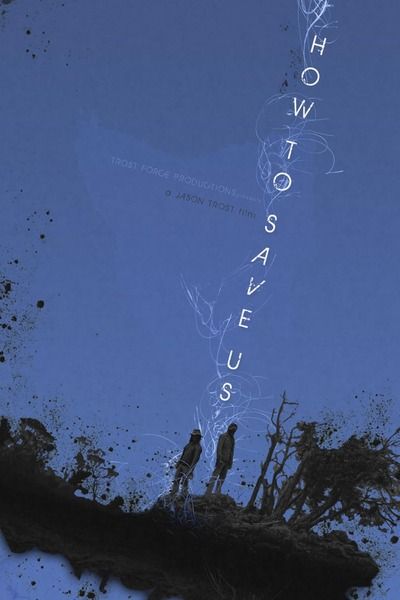 This kind of thing can become a pain for the viewer, because low-budget movies tend to use it as an alternative to anything happening – in particular, anything that would cost money to depict. Here, you don’t often get this sense, because the film never looks cheap, meaning you rarely have reason to suspect it’s trying to cut corners. I won’t deny, my attention did wobble somewhat. Though less than I would have expected, given the previously mentioned lack of many things happening. I did wonder how the movie would be able to tie things up – or if it would bother to try. To the film’s credit, it does a better job in this area than I expected.
This kind of thing can become a pain for the viewer, because low-budget movies tend to use it as an alternative to anything happening – in particular, anything that would cost money to depict. Here, you don’t often get this sense, because the film never looks cheap, meaning you rarely have reason to suspect it’s trying to cut corners. I won’t deny, my attention did wobble somewhat. Though less than I would have expected, given the previously mentioned lack of many things happening. I did wonder how the movie would be able to tie things up – or if it would bother to try. To the film’s credit, it does a better job in this area than I expected.
The finale sees Brian go through the portal to the other side. There he is forced to confront the unpleasant truth about his childhood, his own guilt about having failed to protect his siblings, and the role he played in his parents’ deaths. It’s pretty heavy stuff, but does provide a decent payoff, for your patience in sticking with this slow-burn of a spectral drama. While there is not much video-game influence here, I did appreciate the use of a gratuitous Nintendo Power Glove as an anti-ghost weapon. I think coming in at a terse 78 minutes was probably a wise choice: any more would potentially have tried my patience to an unacceptable degree. Yet it all works a little more effectively than I would have thought.
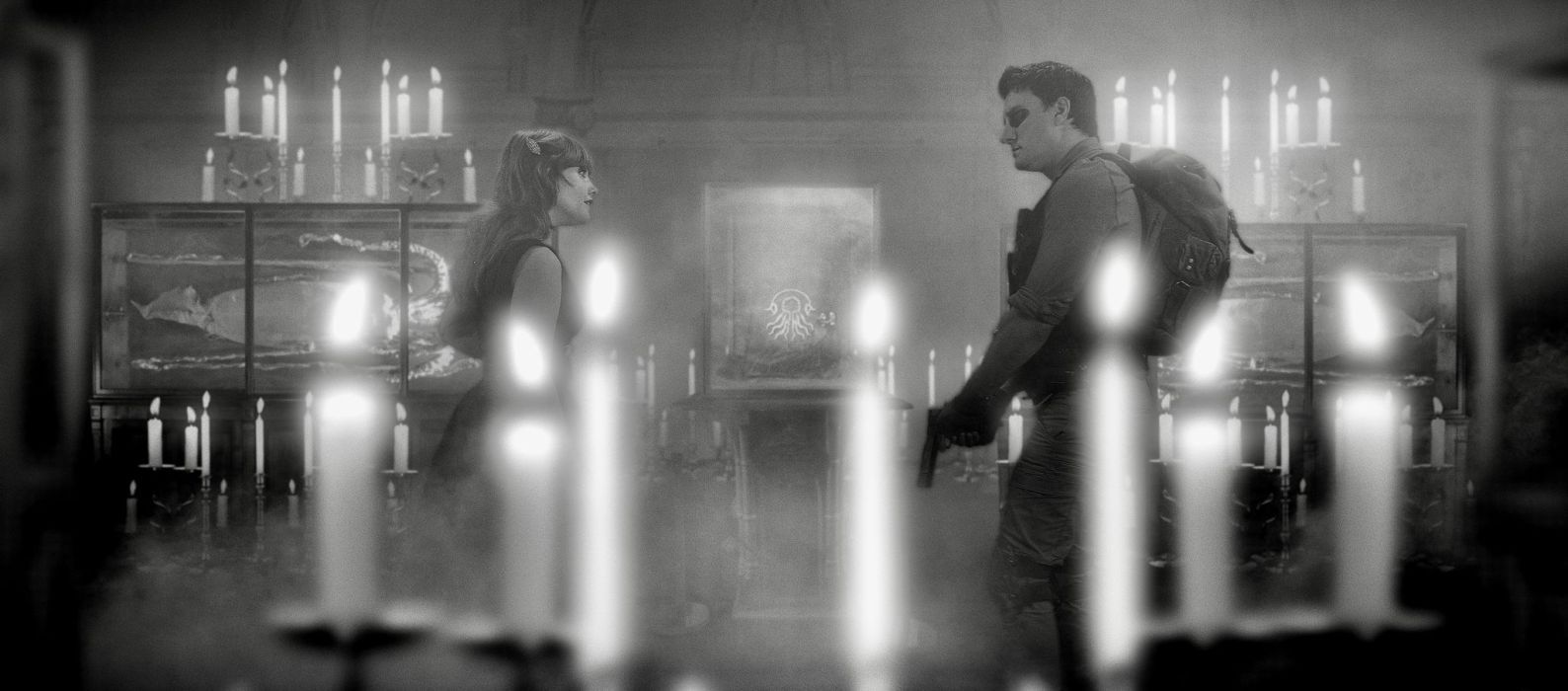
The Waves of Madness (2024)
Rating: B+
Dir: Jason Trost
Star: Jason Trost, Tallay Wickham, Ryan Gibson, Nick Principe
This is a Lovecraftian horror movie, set on a cruise ship in the Pacific, the Elder of the Seas, from which two thousand passengers and crew have vanished. This was also basically made by three people in an apartment, for about the cost of a somewhat used, mid-price sedan. Those two sentences may seem ludicrously incompatible. Yet here we are. Waves is the first side-scrolling horror movie too, and as that would imply, is largely a love letter to video games of the survival horror persuasion. Well, supposedly. I must defer there to those whose experience of the gaming genre is more recent than Doom, with the Aliens patch. Despite my lack of reference points for this aspect, I still found a lot to enjoy and appreciate.
Sent to investigate the situation is Agent Legrasse (Trost), when the liner goes off course by a thousand miles to Point Nemo – the location farthest from any land. Boarding the ship, he finds it all but deserted. Key words “All but”, since he rescues Francis (Wickham) from the ship’s brig. She guides him through the decks of the vessel to where a group of cultists are preparing a sacrificial ceremony, with the intent of wakening one of the Old Ones. Or does she? Because, intercut with the mission, are scenes of Legrasse’s debriefing. Dr. Birkin (Gibson), who works for the agent’s employers, suggests Francis might have been a figment of his imagination, brought on by traumas, past and present, as a coping mechanism. Or insanity.
 The style is genius, because the low-fi approach is perfect. It works, both as a pastiche of video game visuals, and for being just a little off-centre, as appropriate for cosmic horror. The occasional rough edges thus work in the movie’s favour. The monster depicted here, resembles a fireball with limbs and tentacles – and why not? Legrasse, too, feels like the hero from Metal Gear Solid, with a touch of Snake Plissken – not least because of the eyepatch he sports [though Trost wears one in reality, and just carried it over to his character]. I’d say this is a rare case where having the same person write, direct and star helps the movie. There’s a definite vision here, and it’s one which needs dedicated shepherding to reality.
The style is genius, because the low-fi approach is perfect. It works, both as a pastiche of video game visuals, and for being just a little off-centre, as appropriate for cosmic horror. The occasional rough edges thus work in the movie’s favour. The monster depicted here, resembles a fireball with limbs and tentacles – and why not? Legrasse, too, feels like the hero from Metal Gear Solid, with a touch of Snake Plissken – not least because of the eyepatch he sports [though Trost wears one in reality, and just carried it over to his character]. I’d say this is a rare case where having the same person write, direct and star helps the movie. There’s a definite vision here, and it’s one which needs dedicated shepherding to reality.
The movie runs little more than an hour, excluding the credits, and this restraint on length is probably wise. It does occasionally teeter on the edge of collapsing, sometimes feeling like it’s held together with sticky back plastic and can-do spirit. Yet that’s half the fun. While I can’t particularly speak to its merits as a video game movie – albeit for a game that doesn’t exist – those that know more, say it’s closer to the Resident Evil games than the movies were. [Full disclosure: I love those films, perhaps because I never played the games] What I can say with confidence is, it is very good at capturing the spirit of H.P. Lovecraft, in a way far better-funded movies often struggle to achieve.
The Waves of Madness is currently available on Blu-Ray from Umbrella, and on VOD through Amazon.
